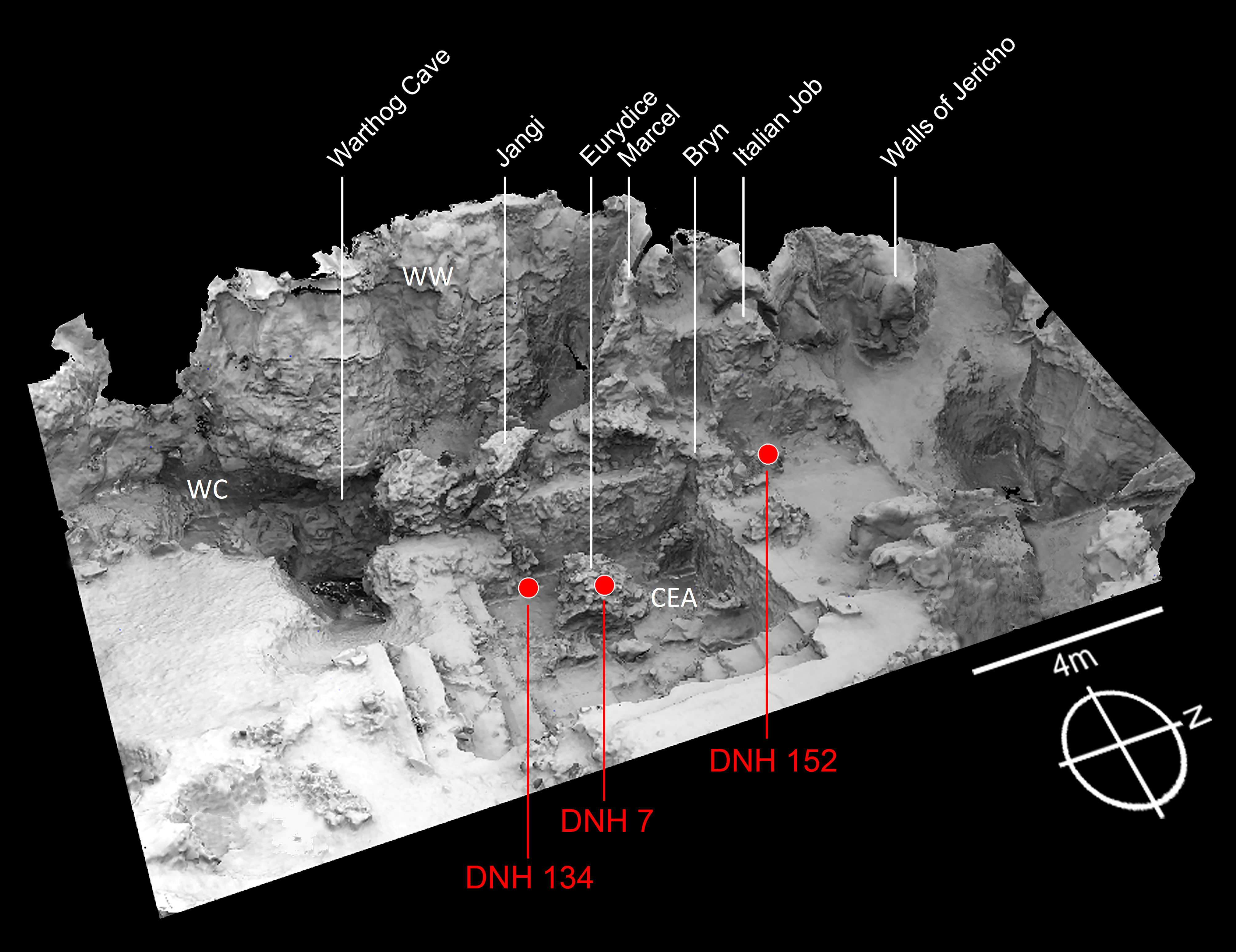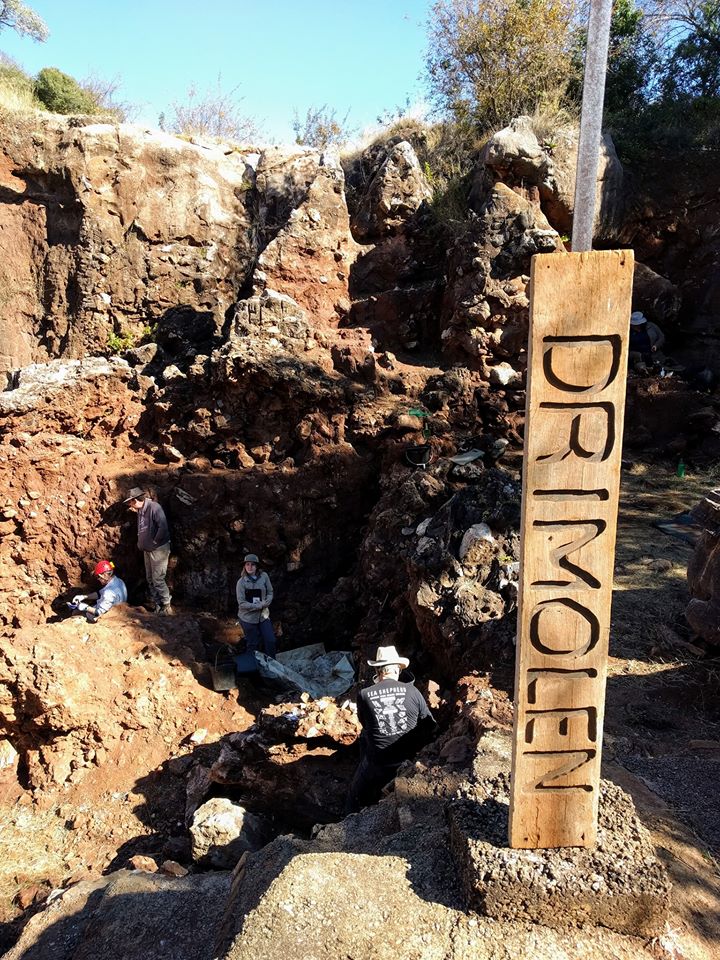When three species of human ancestor walked the Earth

Homo erectus cranium from Dimolen, South Africa. Credit Angeline Leece.
An international team including ASU researcher Gary Schwartz, has unearthed the earliest known skull of Homo erectus, the first of our ancestors to be nearly human-like in their anatomy and aspects of their behavior.
Years of painstaking excavation at the fossil-rich site of Drimolen, nestled within the Cradle of Humankind (a UNESCO World Heritage site located just 40 kilometers or around 25 miles northwest of Johannesburg in South Africa), has resulted in the recovery of several new and important fossils. The skull, attributed to Homo erectus, is securely dated to be 2 million years old.
In a paper published this week in Science, the team of nearly 30 scientists from five countries share details of this skull — the most ancient fossil Homo erectus known — and other fossils from Drimolen and discuss how these new finds are forcing us to rewrite a part of our species’ evolutionary history.
The high-resolution dating of Drimolen’s fossil deposits demonstrates the age of the new skull to pre-date Homo erectus specimens from other sites within and outside of Africa by at least 100,000 to 200,000 years and thus confirms an African origin for the species.
The skull, reconstructed from more than 150 separate fragments, is of an individual likely aged between three and six years old, giving scientists a rare glimpse into childhood growth and development in these early human ancestors.

A 3D laser scan of Drimolen main quarry showing the discovery location of the new Homo erectus (DNH 134) and Paranthropus robustus (DNH 152) crania relative to the major site features and the position of the original fossil find the site (DNH 7).” Credit: David Strait
Additional fossils recovered from Drimolen belong to a different species — in fact, a different genus of ancient human altogether — the more heavily built, robust human ancestor Paranthropus robustus, known to also occur at several nearby cave sites preserving fossils of the same geological age. A third, distinctive species, Australopithecus sediba, is known from 2-million-year old deposits of an ancient cave site virtually down the road from Drimolen.
“Unlike the situation today, where we are the only human species, 2 million years ago our direct ancestor was not alone,” said Andy Herries, project director and lead researcher from La Trobe University in Australia.
Gary Schwartz, a paleoanthropologist and research associate with ASU’s Institute of Human Origins, participated in the excavations and recovery of the new cranium, and as an expert in the evolution of growth and development, is continuing his work with the research team to analyze the many infant and juvenile specimens found at the site.
“What is really exciting is the discovery that during this same narrow time slice, at just around 2 million years ago, there were three very different types of ancient human ancestors roaming the same small landscape,” said Schwartz, who is also an associate professor in the School of Human Evolution and Social Change.. “We don’t yet know whether they interacted directly, but their presence raises the possibility that these ancient fossil humans evolved strategies to divvy up the landscape and its resources in some way to enable them to live in such close proximity.”

Drimolen excavation site. Gary Schwartz is in the red hard hat. Credit: Andy Herries and Giovanni Boschian
The ability to date Drimolen’s cave deposits with such a high degree of precision, using a range of different dating techniques, allowed the team to address important broader questions about human evolution in this region of Africa.
Paper co-author Justin Adams from Monash University (Australia), a specialist in reconstructing paleohabitats based on the animals preserved at fossil sites, said the discovery now allows us to address what role changing habitats, resources, and the unique biological adaptations of early Homo erectus may have played in the eventual extinction of Australopithecus sediba in South Africa.
“The discovery of the earliest Homo erectus marks a milestone for South African fossil heritage,” said Stephanie Baker, project co-director and University of Johannesburg doctoral student.
Fieldwork will continue at Drimolen, expanding the excavations to include even more ancient components of the cave and to provide a more in-depth glimpse at the forces shaping human evolution in this part of the African continent.
More Science and technology

ASU author puts the fun in preparing for the apocalypse
The idea of an apocalypse was once only the stuff of science fiction — like in “Dawn of the Dead” or “I Am Legend.” However…

Meet student researchers solving real-world challenges
Developing sustainable solar energy solutions, deploying fungi to support soils affected by wildfire, making space education more…

Miss Arizona, computer science major wants to inspire children to combine code and creativity
Editor’s note: This story is part of a series of profiles of notable spring 2024 graduates. “It’s bittersweet.” That’s how…